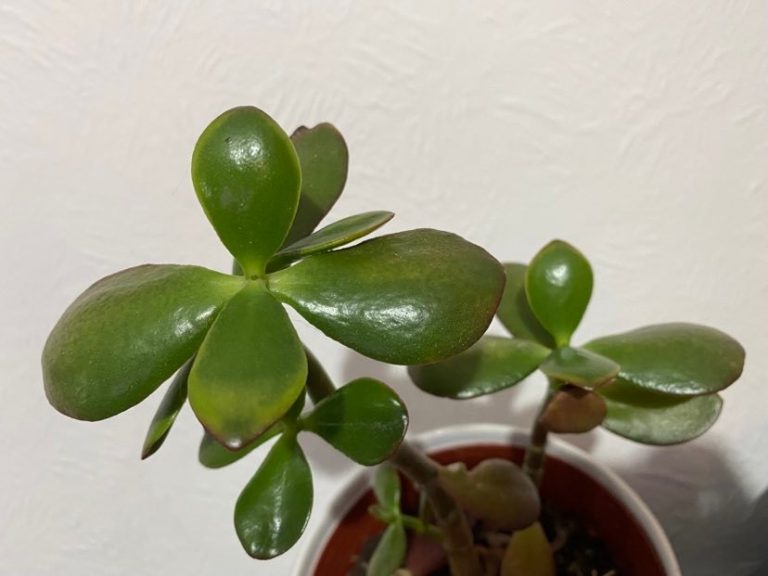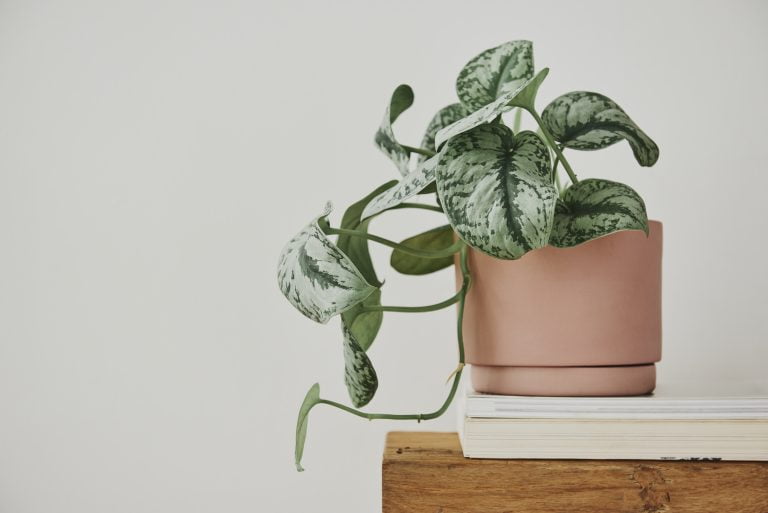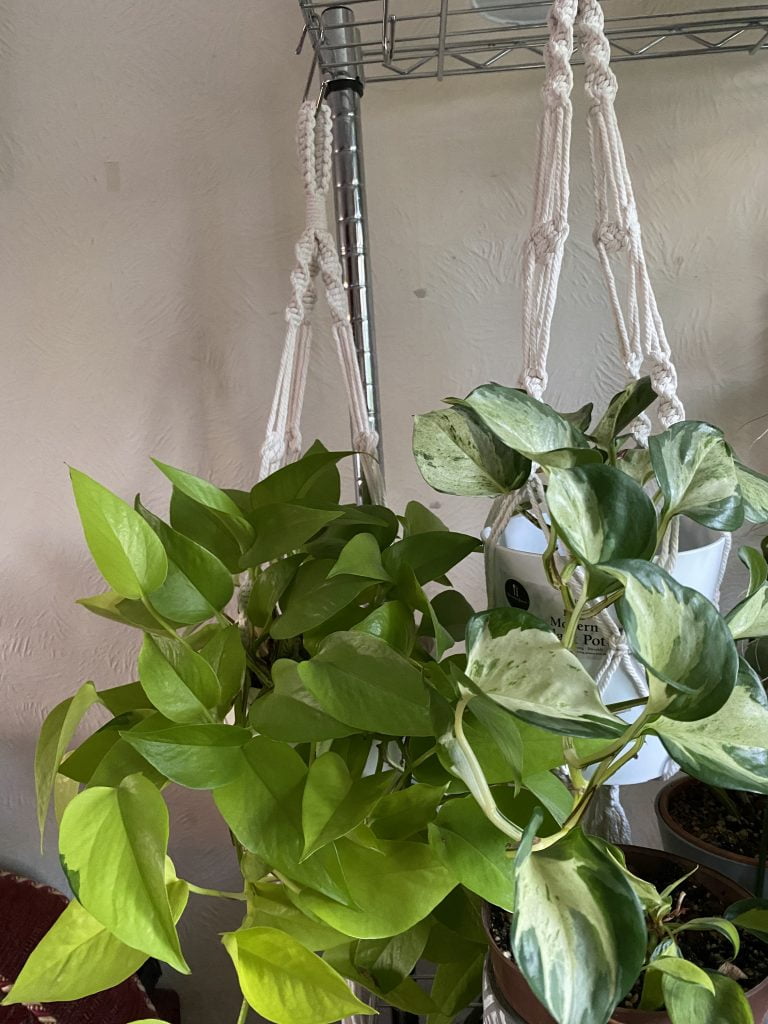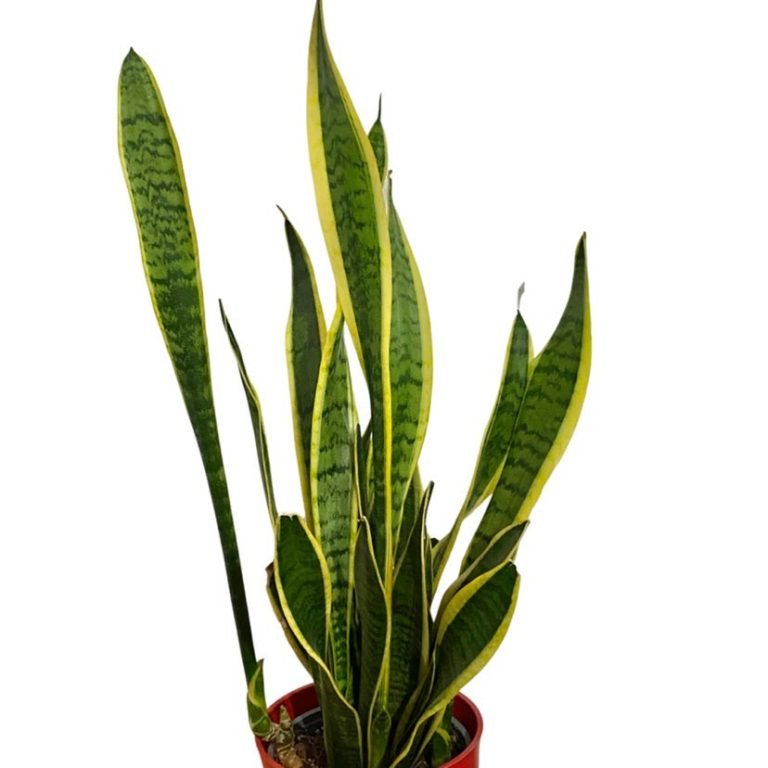The Best Soil for Houseplants
Soil amendments are substances that are added to soil to improve its physical properties, such as drainage, water retention, and nutrient content.
They can be organic or inorganic, and can be used to address specific issues or to provide a general boost to the health of houseplants. Here are some common soil amendments for houseplants:
- Compost: Compost is made from organic matter that has decomposed, and it can be added to soil to improve its structure and provide nutrients. It is a good source of nitrogen, phosphorus, and potassium, as well as trace elements.
- Peat moss: Peat moss is a type of organic matter that is high in water-holding capacity and helps to improve soil structure. It is also a good source of trace elements.It is made from partially decomposed organic material, such as moss or other plants, that has accumulated over time in peat bogs. Peat moss is known for its ability to retain moisture and nutrients, making it a popular choice for use in soil mixes and potting soils for houseplants. It is also used as a mulch to help retain moisture in the soil around plants.When using peat moss for houseplants, it is important to remember that it is a dry, lightweight material that can be easily blown away by wind or washed away by water. To use peat moss effectively, it should be mixed with other soil components, such as compost or perlite, to help it retain moisture and improve the overall structure of the soil. Peat moss can also be used to propagate plants by rooting cuttings in a mix of peat moss and water.
Peat moss can be used in a variety of ways to benefit houseplants. Some common ways to use peat moss include:
- As a soil amendment: Peat moss can be mixed into the soil to improve moisture retention and aeration. It is especially useful in sandy soils or in areas with low humidity.
- As a mulch: Peat moss can be spread around the base of houseplants to help retain moisture in the soil.
- For propagating plants: Peat moss can be mixed with water to create a rooting medium for propagating plants from cuttings.
- To create a potting mix: Peat moss can be mixed with other soil components, such as compost or perlite, to create a well-draining potting mix for houseplants.
In general, peat moss can be used in houseplants at any time of year, although it may be especially useful during periods of drought or low humidity to help plants retain moisture. It is important to follow the recommended application rates and to water the plants regularly to ensure that they receive sufficient moisture.
3. Vermiculite: is a type of mineral that is highly absorbent and helps to improve soil structure and water retention.
- It is often used in soil mixes for houseplants. It is a lightweight, porous material that helps to retain water and nutrients in the soil.
- It can also help to aerate the soil, which is important for the health of the roots. It is often mixed with other materials, such as peat moss or compost, to create a well-draining and nutrient-rich soil mix for houseplants.
- It is especially useful for plants that require a lot of moisture, such as ferns and African violets. It is also useful for plants that are grown in containers, as it helps to prevent the soil from becoming compacted.
4. Perlite: is a type of mineral that is highly porous and helps to improve drainage and aeration in soil.
- It is a useful soil amendment for a wide range of houseplants, and can be used in a variety of potting soil mixes. It is particularly useful for plants that prefer well-draining soil and are sensitive to over-watering, such as ferns and orchids.
- It can also be helpful for plants that are grown in containers, as it helps to improve soil structure and drainage, which can be important for plants that are confined to a small space. It can also be useful for plants that are prone to soil compaction, as it helps to keep the soil from becoming too dense and compacted.
- When using perlite in potting soil, it is important to follow the recommended amount for your specific plant, as too much perlite can cause the soil to become too dry. It is also a good idea to mix perlite with other types of soil amendments, such as compost or peat moss, to create a well-balanced soil mix for your plants.
- Sand can be used as a soil amendment for houseplants, but it is not a suitable growing medium on its own. Sand is not able to retain moisture or nutrients like soil can, and it does not have the necessary structure to support the root systems of most plants.
- If you want to use sand in your houseplant potting mix, it is best to mix it with other soil amendments such as compost or peat moss to create a well-draining and nutrient-rich growing medium. A general rule of thumb is to mix no more than 1/3 sand with the rest of the potting mix.
- It is also important to choose the right type of sand for your plants. Coarse sand, such as builders sand, is better for drainage and aeration, while fine sand, such as horticultural sand, is better for water retention.
- It is also worth noting that not all houseplants need or benefit from a sandy soil mix. Some plants, such as ferns and other moisture-loving plants, prefer a soil mix that is high in organic matter and retains moisture well. It is always a good idea to research the specific needs of the plants you are growing and tailor your soil mix accordingly.
6. Activated charcoal: Activated charcoal is often used in houseplants to help improve the overall health and appearance of the plant. It can be used in a number of ways, including as a soil amendment, a potting mix ingredient, and as a foliar spray.
- One of the main benefits of using activated charcoal in houseplants is that it helps to improve the soil quality by removing toxins and impurities. It can also help to absorb excess moisture in the soil, which can be beneficial for plants that are prone to over watering.
- In addition to its use in soil, activated charcoal can also be used as a foliar spray to help remove toxins and impurities from the leaves of the plant. This can be especially useful for plants that have been exposed to pollutants or chemicals.
- It is important to note that activated charcoal should be used sparingly, as it can absorb important nutrients from the soil as well as toxins. It is generally recommended to use it in small amounts and to monitor the health of the plant closely to ensure that it is benefiting from the treatment.
- The amount of activated charcoal that you should use in your houseplants will depend on a number of factors, including the size of the plant, the type of soil that you are using, and the specific needs of the plant.
- As a general rule, it is recommended to use a small amount of activated charcoal in your plants, typically no more than 1-2 tablespoons per gallon of soil. If you are using it as a potting mix ingredient, you can mix it in with the other soil components in a ratio of about 1 part activated charcoal to 8 parts soil.
- If you are using activated charcoal as a foliar spray, you can mix it with water at a ratio of about 1 teaspoon of activated charcoal per quart of water. Be sure to shake the mixture well before spraying it on the leaves of the plant.
- It is important to monitor the health of your plant closely when using activated charcoal, as too much can cause the soil to become too dry or absorb too many nutrients. If you notice any negative effects, such as wilting or yellowing of the leaves, reduce the amount of activated charcoal that you are using.
7. Leca: or lightweight expanded clay aggregate, is a type of soil amendment that is often used for growing houseplants. It is made from small, porous balls of clay that are heated to high temperatures in a rotary kiln, causing them to expand and become lightweight. Leca has several properties that make it useful for growing houseplants:
- Good drainage: Leca has a high porosity, which allows excess water to drain easily from the soil. This is especially helpful for plants that are prone to root rot, as it prevents the roots from sitting in soggy soil.
- Aeration: The porous structure of Leca also allows air to circulate through the soil, which is important for plant root health.
- Lightweight: Leca is much lighter than other types of soil amendments, making it easier to handle and less likely to compact.
- Inert: Leca does not contain any nutrients, so it does not alter the pH of the soil or provide any nutrients to the plants. This makes it a good choice for plants that are sensitive to changes in soil pH or for those that prefer a neutral soil environment.
There are many houseplants that are sensitive to changes in soil pH or that prefer a neutral soil environment. Here is a list of some common houseplants that fall into one of these categories:
- Ferns: Many types of ferns, including maidenhair ferns and staghorn ferns, prefer a neutral soil pH between 6.0 and 7.0.
- African violets: These popular houseplants prefer slightly acidic soil with a pH between 6.0 and 6.5.
- Orchids: Many types of orchids, including phalaenopsis and cymbidium, prefer slightly acidic soil with a pH between 6.0 and 7.0
- Peace lilies: These popular houseplants prefer slightly acidic soil with a pH between 6.0 and 6.5.
- Ficus: Many types of ficus, including rubber plants and weeping figs, prefer slightly acidic soil with a pH between 6.0 and 6.5.
- Palms: Many types of palms, including areca palms and parlor palms, prefer slightly acidic soil with a pH between 6.0 and 6.5.
Using a soil amendment like Leca can be helpful in these situations because it does not alter the pH of the soil. This allows you to control the pH of the soil by adding other amendments, such as lime for alkaline soil or sulfur for acidic soil, as needed. It also makes Leca a good choice for plants that prefer a neutral soil environment, such as ferns and many types of tropical plants.
Keep in mind that it is important to regularly test the pH of your soil to ensure that it is within the appropriate range for the plants you are growing. This will help ensure that your plants are getting the nutrients they need and are able to thrive.
In general, Leca is a good choice for houseplants that prefer well-draining soil, such as succulents, cacti, and orchids. It can be used as a soil amendment or as a standalone growing medium in containers or hydroponic systems.
8. Worm castings, also known as vermicompost, are a type of compost made from the feces of worms. They are a rich source of nutrients for plants and can be used as a natural fertilizer for houseplants. Here are some benefits of using worm castings for houseplants:
- Nutrient-rich: Worm castings are packed with nutrients that are essential for plant growth, including nitrogen, phosphorous, and potassium. They also contain trace minerals and beneficial bacteria that can help improve soil quality.
- Slow-release fertilization: The nutrients in worm castings are released slowly over time, making
- a more consistent source of nourishment for plants compared to synthetic fertilizers, which can be quickly absorbed and then quickly depleted.
- Improved soil structure: As worms consume organic matter and excrete castings, they also help to improve the structure of the soil by creating channels and pores that allow air and water to circulate more easily. This can help to improve the overall health of the soil, as well as the health of the plants growing in it.
- Pest and disease resistance: The presence of beneficial bacteria and other microbes in worm castings can help to suppress pests and diseases, making them a natural way to protect your plants.
- Sustainable and environmentally friendly: Using worm castings as a fertilizer is a sustainable and environmentally friendly alternative to synthetic fertilizers, which can have negative impacts on the environment. Worm castings are also a great way to reduce waste and reuse organic materials, as they are made from composted materials that would otherwise be discarded.
The amount of worm castings you use for your houseplants will depend on a number of factors, including the size of your plants, the type of soil they are growing in, and the specific needs of the plants. Here are some general guidelines for using worm castings for houseplants:
- For potted plants: To use worm castings as a top dressing, apply a thin layer (about 1/4 inch) of castings to the surface of the soil, being careful not to disturb the roots of the plant. Alternatively, you can mix the castings into the soil when you are repotting your plants. In general, you should aim to use about 1/4 to 1/2 cup of worm castings per gallon of soil.
- For seedlings: When planting seedlings, you can mix worm castings into the soil at a rate of about 10-20% by volume. For example, if you are using a gallon of soil, you could mix in about 1-2 cups of worm castings.
- For established plants: For established plants that are growing in the ground, you can use worm castings as a side dressing by applying them to the soil around the base of the plant. Use about 1/4 to 1/2 cup of worm castings per square foot of soil, being careful not to let the castings come into direct contact with the plant’s stem or leaves.
It’s important to note that worm castings should not be used as the sole source of nutrients for your plants. They should be used in combination with other fertilizers, such as compost or an all-purpose plant food, to provide a balanced diet for your plants. It’s also a good idea to test the pH of your soil before using worm castings, as they can slightly lower the pH of the soil. If the pH is too low, you may need to adjust it with the addition of lime or another soil amendment.
9. Pumice is a type of volcanic rock that is light, porous, and abrasive. It is often used in horticulture as a soil amendment because it has several beneficial properties for plants.
One of the main benefits of using pumice in soil is that it helps to improve drainage. Pumice has a high porosity and low density, which means that it can hold air and water while also allowing excess moisture to drain away. This can be especially useful for plants that prefer well-draining soil or that are prone to root rot.
Pumice can also help to improve the structure of soil. It can help to break up heavy, compacted soil and add some aeration, which can be beneficial for plants that require good oxygenation in the root zone.
In addition to improving drainage and soil structure, pumice can also help to provide some nutrients to plants. It is a source of silicon, which can help to strengthen plant cells and improve their resistance to pests and diseases. Pumice can also provide some trace elements that may be lacking in the soil.
It is important to use pumice in moderation, as it can be abrasive and may damage delicate roots if used in large quantities. It is also a good idea to mix pumice with other soil amendments, such as compost or peat moss, to create a well-balanced growing medium.
The amount of pumice to use in houseplants will depend on the type of plant you are growing and the condition of the soil. In general, it is best to use a small amount of pumice in combination with other soil amendments to create a well-balanced growing medium.
Here are some general guidelines for using pumice in houseplants:
- For plants that prefer well-draining soil, such as succulents and cacti, you can use up to 50% pumice in the soil mix.
- For plants that prefer a more moisture-retentive soil, such as ferns and dieffenbachia, you can use a smaller amount of pumice, around 25-30%.
- For plants that prefer a rich, fertile soil, such as tomatoes and peppers, you can use a smaller amount of pumice, around 10-20%.
It is a good idea to start with a small amount of pumice and gradually increase the amount as needed. You can also mix pumice with other soil amendments, such as compost or peat moss, to create a well-balanced growing medium.
It is important to monitor the moisture levels in the soil and adjust the amount of pumice used accordingly. Overly dry or wet soil can lead to plant stress and reduced growth.
10. Lime: Lime is a type of calcium-based amendment that is used to raise the pH of soil. It is especially useful for plants that prefer alkaline soil.
Lime can be used as a soil amendment for houseplants to help raise the pH of the soil. Most houseplants prefer a soil pH that is slightly acidic, so adding lime to the soil can make it less hospitable for the plant if the pH gets too high.
If you do want to use lime as a soil amendment for your houseplants, it’s important to start with a small amount and then test the soil pH to make sure it’s not getting too high. You can either incorporate the lime into the soil before planting or apply it as a top dressing. If you’re using pelletized lime, you can just sprinkle it over the soil and then water it in. If you’re using powdered lime, it’s a good idea to mix it with a small amount of water before applying it to the soil to prevent it from blowing away.
It’s also worth noting that lime is just one of many options for soil amendments. Depending on the specific needs of your plants, you may want to consider using other amendments or a balanced fertilizer that contains a range of nutrients.
11. Sulfur: is used to lower the pH of soil and is especially useful for plants that prefer acid soil.
Sulfur is a chemical element that can be used as a soil amendment for houseplants. It is often used to lower the pH of soil, as it is a natural acidifying agent. This can be helpful for plants that prefer slightly acidic soil, such as azaleas, gardenias, and blueberries. Sulfur can also be used to control algae growth in soil and as a natural pest control agent.
To use sulfur as a soil amendment, you will need to determine the current pH of your soil and the desired pH for your plants. You can purchase a soil pH testing kit at a garden center or online. Once you have this information, you can calculate how much sulfur you will need to add to your soil to achieve the desired pH.
It is important to note that sulfur can be toxic to plants if it is not used correctly, so be sure to follow the instructions on the product carefully and use it in moderation. Additionally, it can take several weeks or even months for the sulfur to fully take effect, so be patient and test the soil regularly to ensure that you are maintaining the desired pH.
- Coco coir is also environmentally friendly as it is a byproduct of the coconut industry and can be used to replace peat moss, which is a non-renewable resource.
- To use coco coir as a growing medium for houseplants, you can mix it with a small amount of perlite or vermiculite to improve drainage, and wet it thoroughly before planting. It is important to monitor the moisture level of the coco coir and water your plants as needed to keep the medium evenly moist but not waterlogged.
- It can be used as a standalone medium or mixed with other materials such as soil or compost to create a customized growing mix for your houseplants.
Coco coir can be used as an amendment to improve the growing conditions of houseplants. When mixed with soil or other growing media, it can help to improve the structure and drainage of the soil, as well as increase its water-holding capacity. Here are some ways in which you can use coco coir as an amendment for houseplants:
- To improve drainage: Mix a small amount of coco coir into your soil to help increase the soil’s ability to drain excess water. This can be particularly helpful for plants that are prone to root rot or that prefer well-draining soil.
- To increase moisture retention: Coco coir is known for its ability to hold onto water, so adding it to soil can help to increase the soil’s moisture-retention capabilities. This can be helpful for plants that require a consistently moist soil or for those growing in pots without drainage holes.
- To improve soil structure: Coco coir can help to improve the structure of heavy or compacted soil, making it easier for roots to grow and allowing water and nutrients to reach the plant.
To use coco coir as an amendment, simply mix it into your soil or growing media at a ratio of about 25-50% coco coir to 75-50% soil, depending on your plant’s needs. As with any amendment, it is important to monitor the plants and adjust the ratio as needed to ensure that they are receiving the proper nutrients and growing conditions.
Coco coir can be used as a growing medium for a wide variety of houseplants. It is particularly well-suited for plants that prefer well-draining soil and do not like to be constantly waterlogged, as the coco coir has good water-holding capacity but also allows excess water to drain away. Some examples of houseplants that can be grown in coco coir include:
- Succulents and cacti
- Orchids
- Ficus and other plants that prefer a well-draining soil mix
- Philodendrons and other vines
- Ferns and other moisture-loving plants
It is always a good idea to research the specific needs of the plants you are growing to ensure that you are providing them with the right growing conditions. If you are unsure whether coco coir is the right choice for a particular plant.
It’s important to note that soil amendments should be used in moderation and should be incorporated into the soil carefully to avoid damaging the root system of the plants. It’s always a good idea to do some research on the specific needs of your plants before adding any amendments to their soil.







